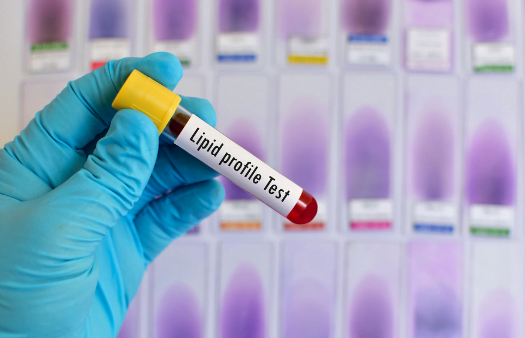Lipid Peroxidation Testing in Environmental Toxicology
Lipid peroxidation is a crucial biomarker used to assess oxidative stress and environmental pollution impacts on living organisms. In the context of environmental toxicology, lipid peroxidation testing helps quantify the extent of damage caused by xenobiotics (foreign chemicals) such as heavy metals, polycyclic aromatic hydrocarbons (PAHs), and other pollutants in biological samples.
The analysis is particularly significant for quality managers and compliance officers who need to ensure that environmental standards are met. This testing can also be critical for R&D engineers working on new formulations or processes aimed at reducing toxicity levels, as well as procurement teams looking to source materials with minimal harmful effects. By measuring lipid peroxidation products in biological tissues like blood serum or liver samples, researchers and practitioners gain insights into the health impacts of environmental contaminants.
According to ISO 17025 standards for testing laboratories, accurate and precise measurement is essential. The methodology involves extracting lipids from the sample matrix using solvents such as chloroform-methanol mixtures followed by derivatization with reagents like thiobarbituric acid (TBA). This process converts malondialdehyde (MDA), one of the main products of lipid peroxidation, into a detectable chromophore. The absorbance at 532 nm is then measured to quantify MDA concentration.
The importance of this testing cannot be overstated. It allows for early detection and mitigation strategies against environmental pollutants that could otherwise cause severe health issues in both humans and wildlife. Compliance officers rely on these results when implementing policies aimed at reducing industrial emissions or improving waste management practices. For R&D teams, understanding lipid peroxidation levels helps tailor safer products while ensuring regulatory compliance.
Real-world applications include monitoring air quality around industrial facilities, assessing soil contamination from agricultural runoff, and evaluating water bodies for aquatic life health. In each case, lipid peroxidation testing provides critical data that informs decision-making processes related to environmental protection and public safety.
- Customer Impact and Satisfaction:
- Provides essential information for regulatory compliance.
- Supports the development of safer products by identifying potential hazards early on.
- Enables better management practices that reduce overall pollution levels.
In summary, lipid peroxidation testing plays a vital role in safeguarding human and environmental health. Through accurate measurement techniques and comprehensive analysis, this service offers valuable insights into the effects of various pollutants on biological systems. This knowledge is indispensable for maintaining high standards across industries involved with environmental stewardship.
Why It Matters
The significance of lipid peroxidation testing lies in its ability to reveal the oxidative stress caused by toxic substances present in our environment. Oxidative stress occurs when there is an imbalance between free radicals and antioxidants within cells, leading to cellular damage. Environmental pollutants like PAHs, pesticides, and heavy metals can exacerbate this condition by generating additional free radicals that initiate lipid peroxidation.
When lipids undergo peroxidation, they form reactive aldehydes such as MDA, which are then readily detectable through spectrophotometric methods. The presence of these markers indicates oxidative damage at the molecular level, highlighting areas where intervention may be necessary to prevent further harm. For instance, in industrial settings, regular lipid peroxidation testing can help identify hotspots for pollution control efforts.
From a broader perspective, understanding how pollutants affect living organisms contributes significantly to environmental policy development and public health initiatives. By providing tangible evidence of pollutant impacts, this service empowers stakeholders across sectors—from government agencies overseeing compliance regulations to private companies striving for sustainable practices—to take proactive measures against harmful contaminants.
Customer Impact and Satisfaction
The impact of accurate lipid peroxidation testing extends beyond mere compliance; it significantly enhances customer satisfaction by providing reliable data that supports informed decision-making processes. Compliance officers appreciate the precision offered by our tests, which help them stay ahead of regulatory changes and demonstrate their commitment to sustainable practices.
- Improved Regulatory Compliance:
- Prompt identification and mitigation of potential risks associated with pollutant exposure.
- Increased customer trust through transparent reporting on environmental performance.
R&D engineers benefit from detailed insights into product safety, enabling them to innovate more effectively without compromising quality. Procurement teams can leverage this information to select suppliers who adhere strictly to eco-friendly standards, thereby ensuring consistent supply chains that meet both ethical and legal requirements.
Ultimately, our services contribute directly to the overall well-being of consumers and ecosystems by offering robust data that drives continuous improvement in environmental management strategies.
Use Cases and Application Examples
- Industrial Monitoring: Regular lipid peroxidation testing at manufacturing sites can detect early signs of pollution issues, allowing for timely corrective actions. For example, a steel plant might use this service to monitor air quality around its operations.
- Aquatic Environment Assessment: This test is essential in evaluating water bodies for their suitability as habitats for aquatic life. By measuring lipid peroxidation levels, researchers can assess the health status of fish populations and other organisms.
- Agricultural Runoff Studies: Lipid peroxidation testing helps determine whether agricultural practices contribute to soil or water pollution. This information is crucial for developing best management practices that minimize negative environmental impacts.
In all these scenarios, lipid peroxidation testing serves as a cornerstone in understanding and addressing the challenges posed by environmental pollutants. Its role in informing stakeholders about current conditions ensures proactive approaches towards preserving natural resources and protecting public health.





